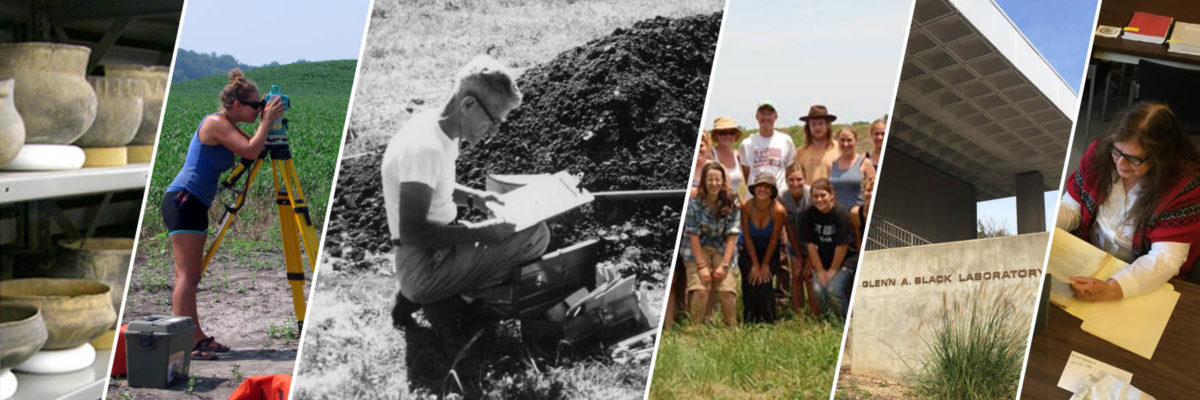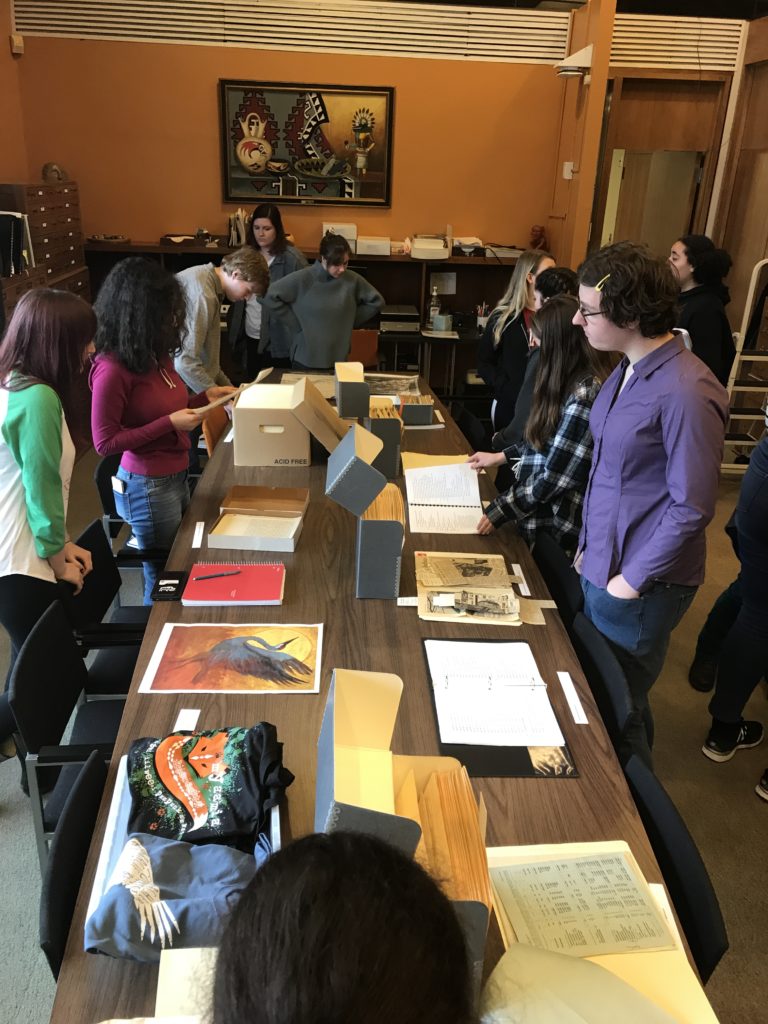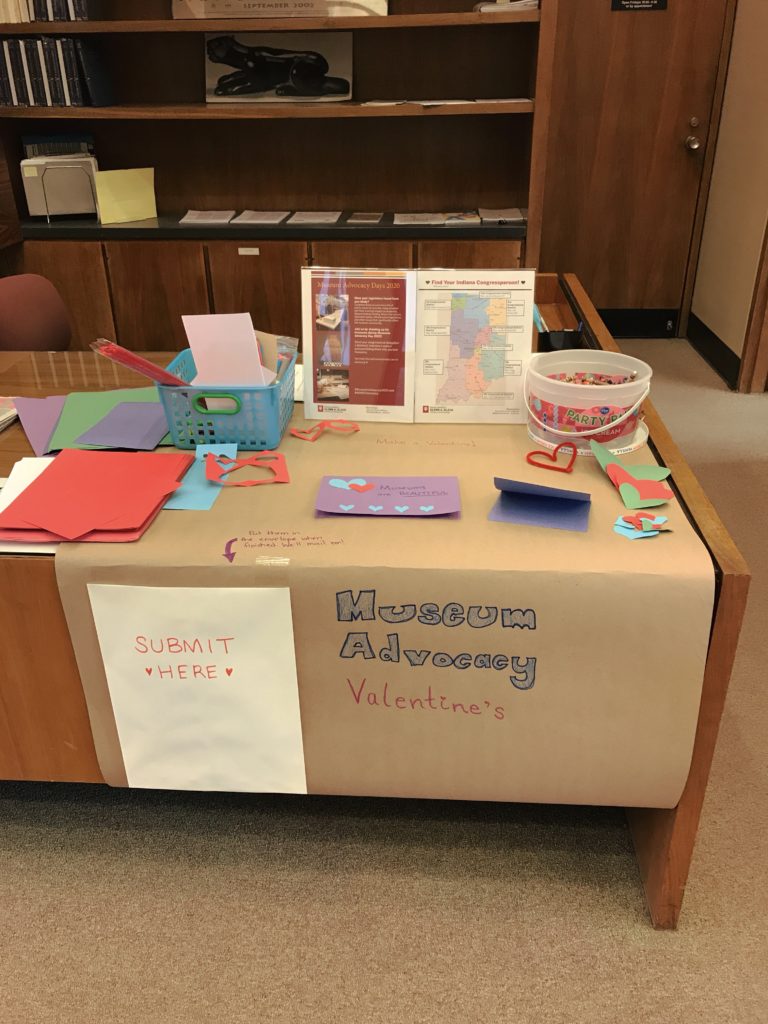From the desk of the IUMAA Director
Click here to read a message from the Executive Director of the Indiana University Museum of Archaeology and Anthropology, Ed Herrman.
From the desk of the GBL Director
Click here to read a message from the GBL Director, April Sievert.
From the desk of the GBL Curator
Click here to read a message from GBL Curator, Melody Pope.
This Semester at the GBL!
Getting Our Move On
Jennifer St. Germain, Collections Manager
When the Glenn Black Lab first opened its doors in 1971, it became the new home for two important collections. These consisted of the 2 million artifacts excavated from Angel Mounds under the direction of Glenn Black and a collection of over 400,000 artifacts transferred from the Indiana Historical Society. The GBL’s collections have grown significantly in the five decades since then and now total over 5 million artifacts and specimens. The collections also include associated records, reports, photographs, maps, films, field notebooks, library resources, archives, and other forms of documentation that chronicle the history of research and curation activities at the GBL.
There are also a large number of people for whom these collections hold meaning and value, including students, staff, researchers, tribal partners, volunteers, school groups and other patrons. Moving the collections safely from the building is a responsibility we undertake on behalf of them all.
Our enormous task officially began in October of 2019 when plans for major renovations to the building were announced to coincide with the merger of the GBL with the Mathers Museum. Planning the move included creating spreadsheets, timelines, and long lists of needed supplies. The entire staff chipped in to quantify the volumes of collections and materials in every space, identify appropriate boxes and packing materials, hire and train new assistants, and help get this move off the ground.
Large mobile carts were purchased and assembled to help transport more than 6000 artifact boxes to an offsite storage facility. Prior to moving, every box has to be evaluated, weighed, and barcoded for tracking in our collections management system. Heavier boxes over 35 lbs are split into multiple boxes to meet new shelf weight restrictions, and most boxes are padded out with ethafoam or other protective materials to better cushion artifacts for transportation (Fig. 1). The completed boxes are then loaded onto mobile carts, transported to our interim storage location, and re-shelved onto barcoded shelving units, often with the assistance of a mobile hydraulic lift. Between November of 2019 and when facilities closed for Covid-19 in March of 2020, the staff and students had moved nearly 3,800 boxes, totaling over 35 tons of artifacts! A special note of thanks goes to our collections assistants, Amanda Pavot, Noah Sandweiss, and Cally Steussy, who shouldered (literally!) much of this box moving work.
Prior to our closure due to COVID, we also started photographing and measuring our extensive collection of ceramic vessels before they get packed (Fig 2). These images and dimensions will help IUMAA staff plan for exhibits, research, and new storage and display solutions over the next few years.
Although the work of packing and moving collections has been suspended, we’ve continued to work remotely on renovation blueprints, new storage layouts, database updates, and other plans for the merger and future reopening as IUMAA. Moving the GBL collections may be challenging, but the renovation work and greatly improved storage conditions and workspaces will be well-worth the effort.
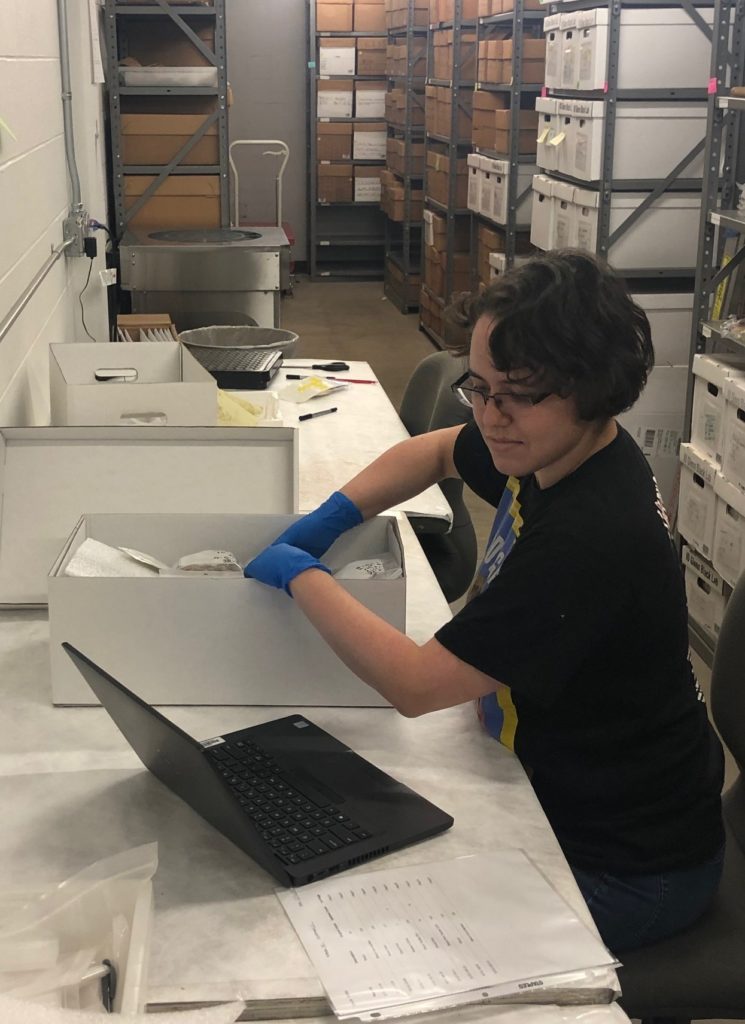
Worker Amanda Pavot (Spring 2020) 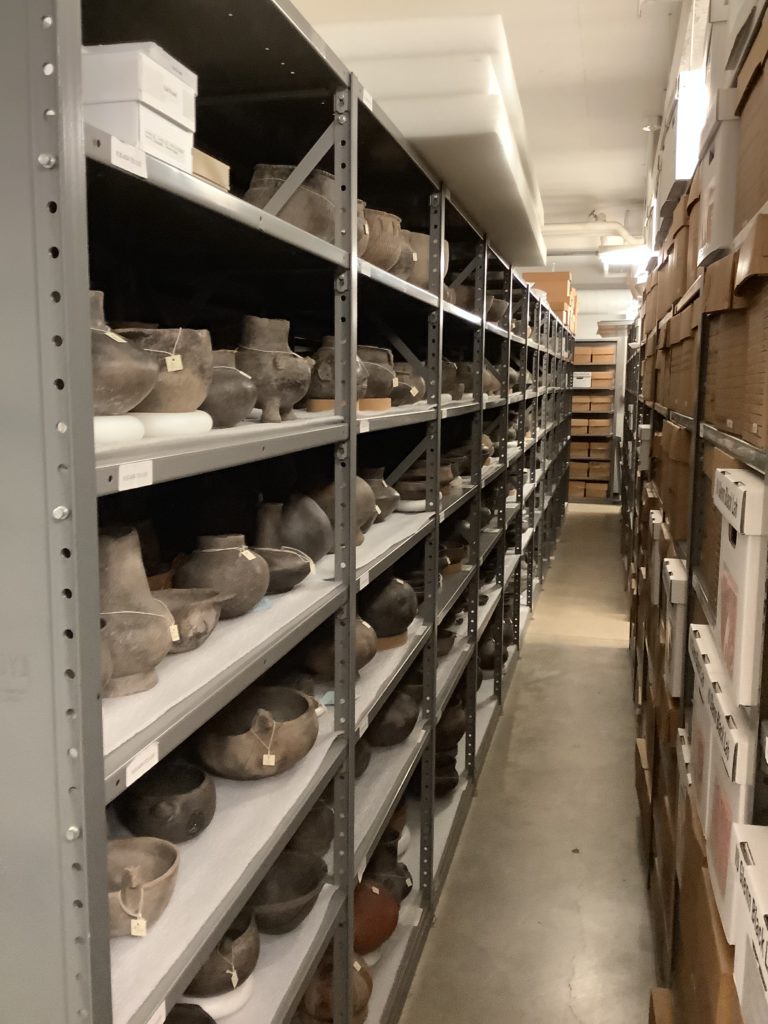
Whole pot aisle (Spring 2020)
Collections Updates
Amanda Burtt
As assistant curator, I have worked closely with Dr. Melody Pope during the spring 2020 semester to help supervise both the Saving America’s Treasures – Angel Mounds Rehousing Project and with packing the type collection for the approaching move. Both projects rely heavily on student hourly workers and I have had the privilege of working with an amazing group of IU grads and undergrads. We accomplished a lot before we had to shut down for the Covid 19 pandemic. When the spring semester began, the SAT team passed the awesome milestone of finishing rehousing all faunal remains from the Angel Mounds site! We began working with the faunal material in the summer of 2019 and have had help from many dedicated students. While rehousing the fauna, we also began a type collection for Angel fauna, which essentially is a collection of extraordinary animal
bones (bears, cougars, raptor, etc.), interesting pathologies, or especially complete specimens. Additionally, the SAT crew identified 29 individual specimens of domestic dogs that will be investigated as part of my dissertation research. I am teaming up with Dr. David Polly and the IU Grand Challenges initiative to have isotopic analysis done on the dog remains to better understand the diets of dogs at Angel Mounds.
Since finishing the faunal rehousing, the SAT crew moved on to ceramics. We were all well trained and running smoothly with ceramic rehousing when we closed for the pandemic. Before closing, Dr. Pope and I established protocols for packing the type collection and had several students trained. We made good progress in a short time, likely due to the exceptional students who
were assisting the project.
While working remotely, my efforts have concentrated on organizing documents for future SAT work that will help streamline the project once it resumes. I have also been investigating application software for use in the new IU MAA. This new technology is evolving and there are a lot of exciting options to be considered.
Besides working on all the important GBL projects, I continue to work on my dissertation. In April, a volume that I both coedited and contributed a chapter, Dogs: Archaeology Beyond Domestication was published with the University Press of Florida. Very exciting! Currently, I am preparing a manuscript on wolf dietary behavior to be submitted this month, also very exciting!
Library
Kelsey Grimm, Librarian
In preparation for the renovations of our building and merger into IUMAA (prior to quarantine), the library collections were busy being packed into boxes! As of March 20th, 563 boxes of materials were packed and housed on shelves ready to be moved. As soon as we can get physically get back to work packing will resume, and then most of the library collections will be moved alongside the archaeological collections at the Auxiliary Library Facility (ALF).
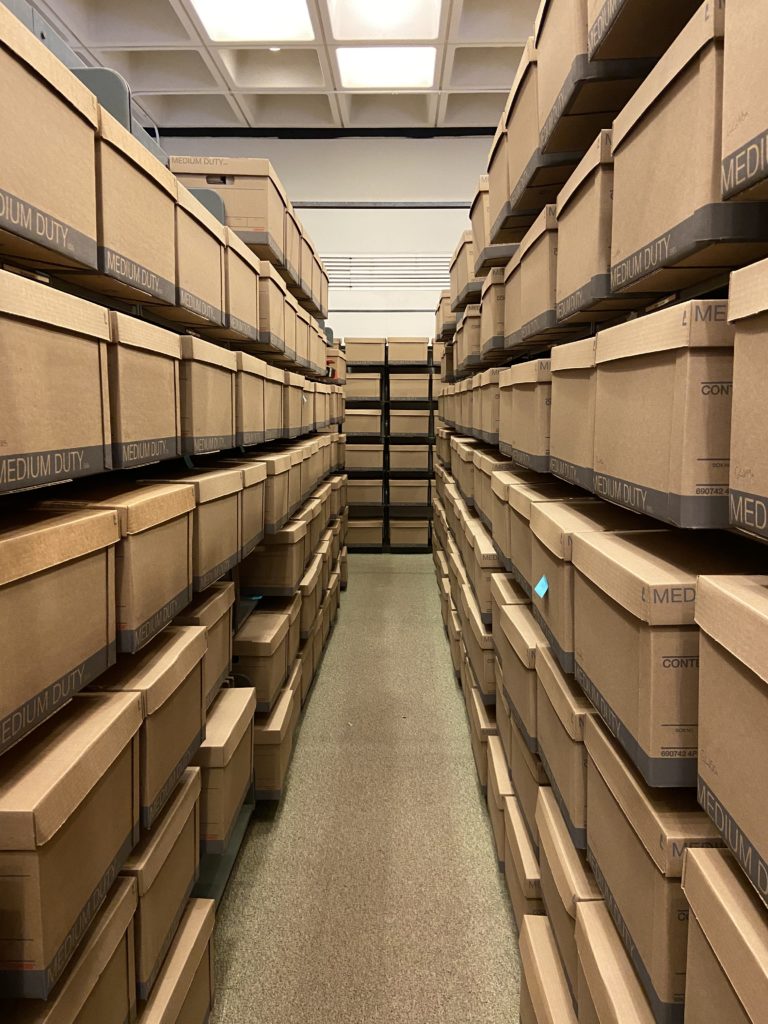
No worries, though! Researchers will still have access to the materials while moved out… we’ll just need a few days lead to time to pull and transport them for you!
Congratulations! Dr. Watts Malouchos!
GBL Research Scientist, Liz Watts Malouchos, successfully defended her dissertation on May 5th. Her dissertation, Assembling Mississippian Communities: Integration and Identities in the Angel Hinterlands, explores relationships between the Angel Mounds center and outlying sites in the southwestern Indiana region. She conducted a non-invasive magnetic survey of the Stephan-Steinkamp site in Posey County, Indiana and detected at least 83 houses at the site. She also undertook targeted excavations of houses and domestic features. She found that one quarter of all the known houses in the countryside were precisely oriented in the same direction as Mound A and Mound F, the oldest mounds at Angel, and were aligned to the movements of the moon. She also noted a unique region-wide practice in which Mississippian Angel peoples collected millennia old stone tools from local Middle Woodland period sites for recycling and reuse. She argues that the lunar alignment of regional houses and mounds and reuse of ancient stone tools were integral practices for creating and maintaining Angel group identities and relationships across the region.

Volunteers, Student Workers, and Part Timers!
Thanks to all of those who worked with us this semester:
Archaeological:
- Mackenzie Cory
- Ariel Creal
- Carley Divish
- James Edens
- Preet Gill
- Mara Gordon
- Maclaren Guthrie
- Conner Hayes
- Anne Hittson
- Grace Nelson
- Amanda Pavot
- Karrigan Perkins
- Ryan Peterson
- Jorge Rios Allier
- Haley Rogers
- Brenna Roller
- Noah Sandweiss
- Emily Schopmeyer
- Lauren Schumacher
- Sheree Sievert
- Matthew Staats
- Cameron Strause
- Cally Steussy
- Evan Weis
Library:
- Patrick Sovereign
Social Media and Outreach
- Josie Myers
Be on the lookout for our new social media profiles!

